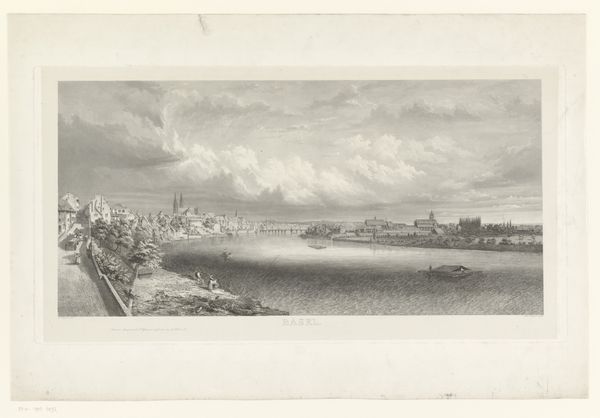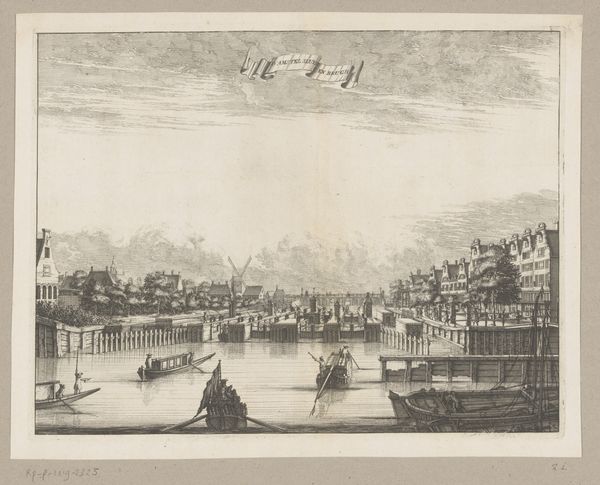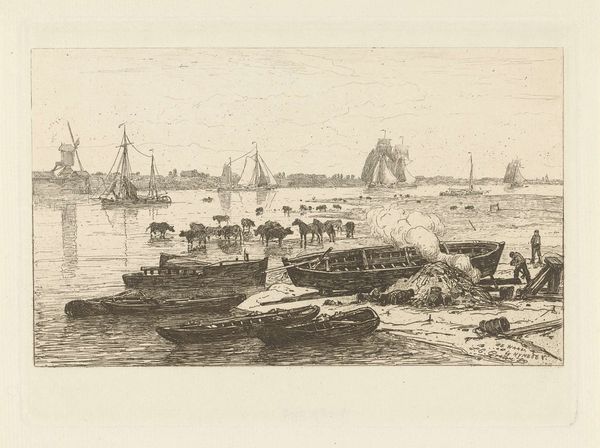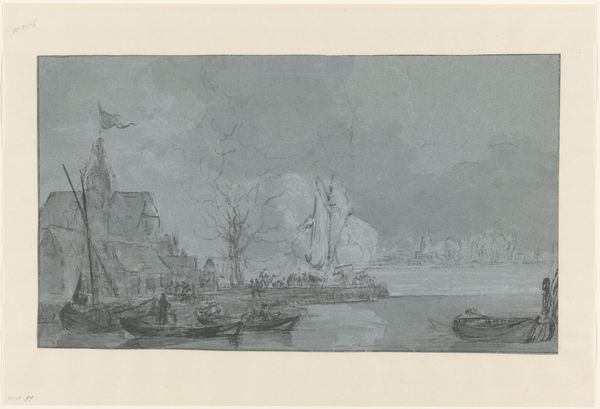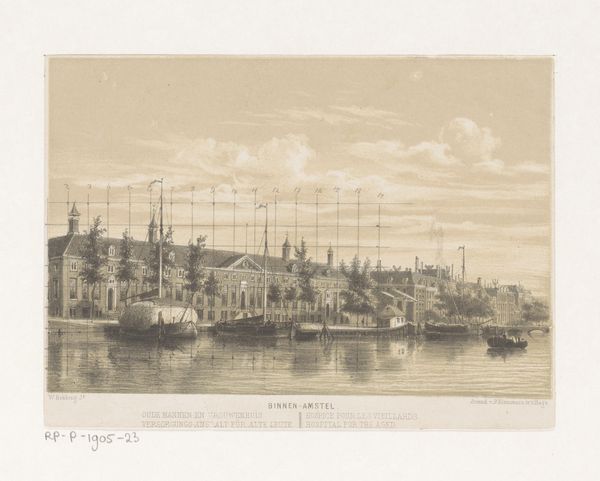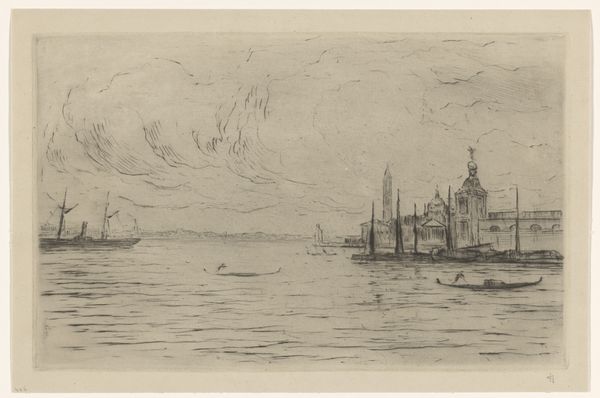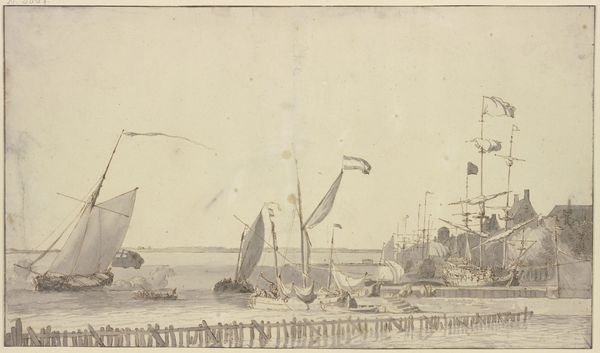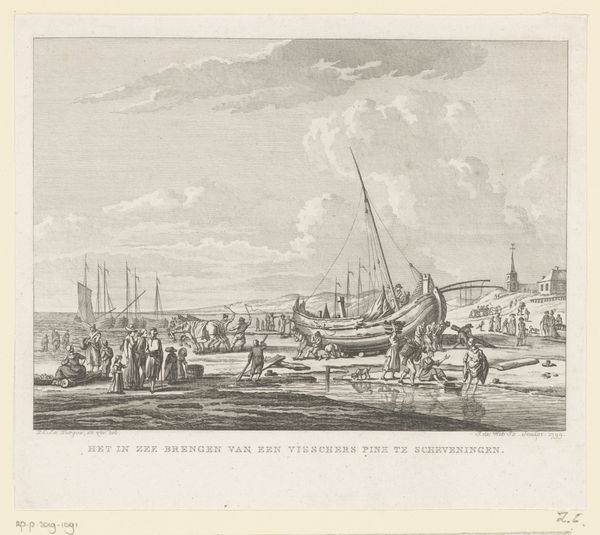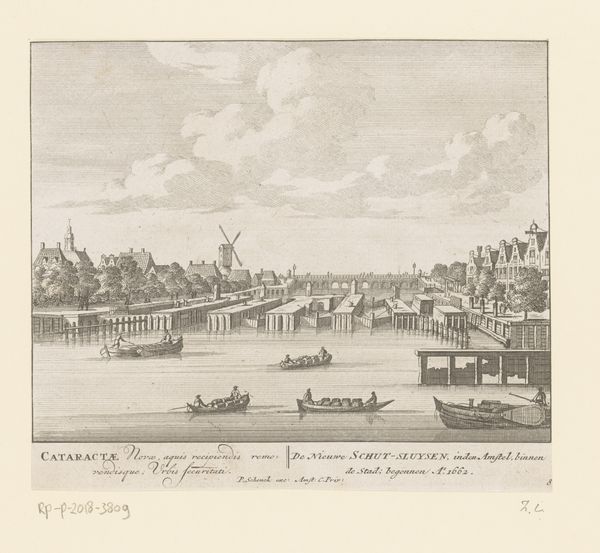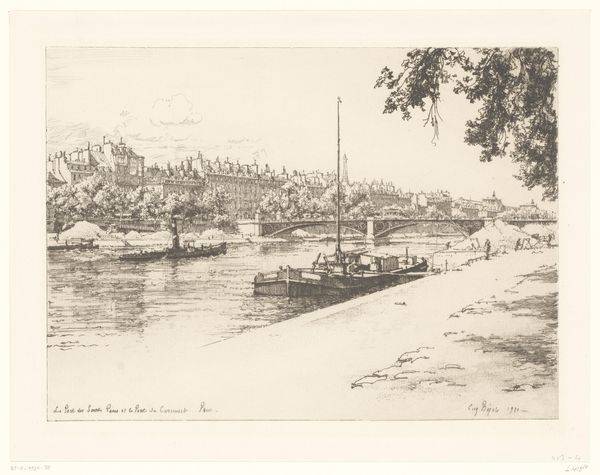
drawing, print, etching, pencil
#
pencil drawn
#
drawing
# print
#
etching
#
landscape
#
pencil
#
realism
Dimensions: height 138 mm, width 237 mm
Copyright: Rijks Museum: Open Domain
Editor: This is "View of the Frozen Amstel River" from 1848, by Johannes Hilverdink. It's a drawing, an etching, made with pencil. There’s an undeniable charm to this winter scene; it seems idyllic, even playful. What do you see in it? Curator: I see a moment in time ripe with social commentary, beyond the surface level charm. Look closely at the figures on the ice – who has access to leisure, to recreation? Who is excluded? Is there evidence of class disparity reflected in who is skating? Consider how gender might play a role in this division. Editor: I see figures of different sizes…are you suggesting only men would be skaters? What evidence can you point to that supports this social disparity, even for a 19th century Dutch scene? Curator: Notice the location – the Amstel River, central to Amsterdam’s identity. The frozen river transforms it into a public space, but does it democratize it? Look at the architecture on the banks: Do you notice a range of domestic architectural styles? Also note the presence of the windmill. To me it suggests industry. Now contrast those skating with the figure down front hauling what looks like buckets of ice. Editor: So the windmill and laboring figure give you a sense that the painting doesn’t just show pretty landscape, but reveals something about class and access. It seems the image makes the case that it's masking an image of inequality, too? Curator: Precisely. Hilverdink offers us a glimpse into a society where winter’s temporary pleasures cannot conceal deeper structural inequalities. It’s about looking at who gets to participate and who doesn’t. And perhaps, asking ourselves, what hasn’t changed since 1848. Editor: This makes me look at the drawing so differently, to consider beyond the landscape. I see it more of as an important time capsule now! Curator: Yes, art invites these critical conversations, encouraging us to question whose stories are told, and whose are often left unseen.
Comments
No comments
Be the first to comment and join the conversation on the ultimate creative platform.

